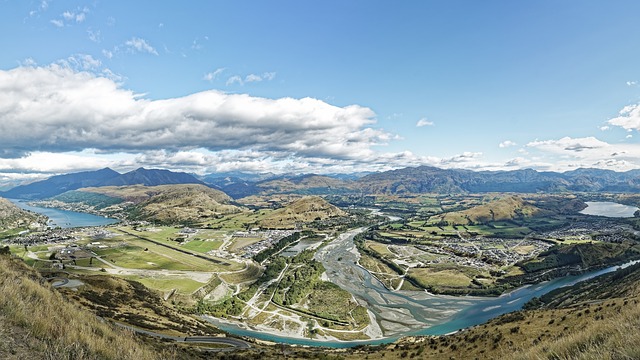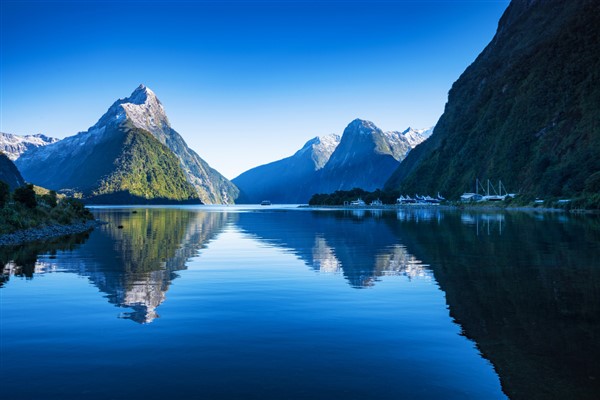Table of Contents
Key Takeaway:
- Fiordland National Park is a remarkable natural icon of New Zealand, known for its majestic fiords and sounds, diverse wildlife, and unique geological formations. The park’s significance lies in its role as a reminder of New Zealand’s natural heritage and the need for conservation efforts to preserve it.
- The fiords and sounds in Fiordland National Park, shaped by glacial erosion, are recognized worldwide for their beauty and allure. Some of the notable ones include Milford Sound, Doubtful Sound, and Dusky Sound, each with its enchanting name and story. A range of activities, such as kayaking, cruising, and diving, provide visitors with an opportunity to explore these captivating waterways.
- The weather in Fiordland National Park is characterized by high rainfall and humidity, with temperatures ranging from moderate to cool. Visitors need to prepare for the weather conditions by carrying adequate gear and clothing and staying informed about weather patterns. Regardless of the season, Fiordland weather patterns offer visitors beautiful vistas, natural phenomena, and unforgettable experiences.
Fiordland National Park: A Natural Icon of New Zealand

Fiordland National Park is a true natural wonder of New Zealand, showcasing breathtaking landscapes and a diverse range of endemic flora and fauna. This iconic park is located in the southwest of New Zealand’s South Island, encompassing over 1.2 million hectares of pristine wilderness.
The park boasts several famous sightseeing spots including Milford Sound and the stunning Mitre Peak. The unparalleled beauty of Fiordland National Park has earned it a reputation as an iconic destination for nature enthusiasts from around the globe.
Fiordland National Park is home to unique species such as the kiwi, kakapo and tuatara lizard, which can only be found in New Zealand. This natural paradise is also renowned for its stunning geological features, formed over millions of years of glacier activity.
The Milford Track, one of the world’s most famous hiking trails, is located in this park, providing an unforgettable experience for visitors eager to discover its beauty.

Check if there is now a group hiking or climbing available in the area of Fiordland National Park, New Zeeland. Click here to find out
Fiordland National Park is not only a natural icon of New Zealand, but it also holds cultural significance to the indigenous Maori population. The park’s fjords and rainforests feature prominently in Maori folklore, and they are considered to be sacred places of spiritual significance. Visitors can learn about the Maori history and culture of the area by participating in guided tours and cultural experiences.
Fiordland National Park continues to captivate visitors with its majestic beauty and rich heritage. A visit to this natural wonder is an experience that will stay with you forever.
Fiords and Sounds in Fiordland National Park
Nestled in the heart of Fiordland National Park lie the breathtakingly beautiful fiords and sounds, offering a stunning display of natural beauty. These waterways offer a unique glimpse into the majestic landscape of New Zealand, showcasing their rugged cliffs, cascading waterfalls and crystal-clear waters.
As visitors navigate their way through this awe-inspiring region, they are treated to views of fur seals, rare Fiordland crested penguins and the endemic bottlenose dolphins. The fiords and sounds in Fiordland National Park present a sight to behold and a memorable experience that should not be missed.
Top 10 Adventure Travel Destinations You Didn’t Know About
Weather in Fiordland National Park
Weather Conditions in Fiordland National Park
Fiordland National Park is known for its unpredictable and rapidly changing weather patterns, making it essential to pack for all eventualities. The park is located in a temperate zone with high rainfall throughout the year. Summers are mild, with temperatures ranging from 9°C to 20°C, while winters are cold, with temperatures averaging 5°C to 9°C.
During the spring season, low-pressure systems can bring in heavy rainfall and high winds, leading to landslides and flooding. It is recommended to check weather forecasts before embarking on any outdoor activities. The park is also prone to sudden changes in weather, so always carry proper rain gear and warm clothing.
Best Camping Essentials For Every Outdoor Enthusiast + Downloadable Camping Checklist
Pro Tip: It is advisable to pack waterproof, breathable layers and sturdy boots when visiting the park. Additionally, consider using lightweight, quick-draw layers for easy access to clothing in case of sudden weather changes.
Getting to Fiordland National Park
The journey to Fiordland National Park may require multiple modes of transportation. Access to it is primarily by road to Te Anau, then by boat or helicopter to Milford Sound or Doubtful Sound. Private cars can reach the park’s towns and camping areas. Some travelers prefer to rent a car or use public transport.
The journey is well worth it, however, as the park is home to exceptional natural beauty, including glaciers, waterfalls, and a diverse range of flora and fauna. Visitors should check for weather conditions and road closures before embarking on their journey to ensure safe and successful arrival.
About Fiordland National Park
Fiordland National Park: A Comprehensive Guide
If you’re planning a trip to Fiordland National Park, you likely have some questions about what to expect. Here are some common inquiries and answers to help you prepare for your visit to one of New Zealand’s most beautiful and unique natural wonders.
When is the best time to visit Fiordland National Park?
The best time to visit Fiordland National Park is during the summer months of December through February when the weather is mild and the days are long. However, keep in mind that the park is popular during this time and accommodations can be expensive and difficult to book.
What are the must-see attractions in Fiordland National Park?
There are many incredible sights to see in Fiordland National Park, but some of the most popular include Milford Sound, Doubtful Sound, Lake Te Anau, and the Kepler Track. Milford Sound, in particular, is one of the most iconic attractions in New Zealand and should not be missed.
Is it possible to see the park in a day or two?
While it is possible to see some of the park’s highlights in a day or two, to truly experience all that Fiordland National Park has to offer, it’s recommended to spend at least a few days exploring. There are many hiking trails and outdoor activities to enjoy, not to mention the stunning vistas and wildlife sightings.
What is the history of Fiordland National Park?
Fiordland National Park has a rich cultural and ecological history. The park was established in 1952 and has since been designated a UNESCO World Heritage Site for its unique flora and fauna. The park also has important cultural significance to the Maori people, who have inhabited the region for centuries.
Five Facts About Fiordland National Park, New Zealand:

- ✅ Fiordland National Park is internationally recognised as part of the wider UNESCO World Heritage site, Te Wāhipounamu (Place of the Greenstone). (Source: Team Research)
- ✅ Fiordland National Park covers 1.2 million hectares of mountain, lake, fiord and rainforest environments and is administered by the Department of Conservation. (Source: Team Research)
- ✅ Fiordland National Park is home to glaciers, alpine ranges and unique flora and fauna that has been in existence since New Zealand was part of the supercontinent Gondwanaland. (Source: Team Research)
- ✅ Fiordland National Park is known around the world for its breathtaking collection of glacial-carved fiords, including Piopiotahi / Milford Sound, Patea / Doubtful Sound, Tamatea / Dusky Sound, and Rakituma / Preservation Inlet. (Source: Team Research)
- ✅ The beauty of Fiordland National Park is shaped by water, with lakes, rivers, streams, waterfalls, lush rainforest, stunning fiords and water locked up as glaciers. However, visitors should be prepared for rain at any time of the year. (Source: Team Research)
FAQs about Fiordland National Park, New Zealand
What is Fiordland National Park and why is it special?
Fiordland National Park is a natural wonderland located on the south-west corner of New Zealand’s South Island. It covers 1.2 million hectares of mountain, lake, fiord and rainforest environments and is administered by the Department of Conservation. It is home to unique flora and fauna that has been in existence since New Zealand was part of the supercontinent Gondwanaland. The park is famous for its glacial-carved fiords and is internationally recognised as part of the wider UNESCO World Heritage site, Te Wāhipounamu (Place of the Greenstone).
What is the history of human activity in Fiordland?
Early Māori visited Fiordland for hunting, fishing and gathering takiwai (a unique form of New Zealand jade or pounamu). European sealers and whalers took shelter in the fiords and built a handful of small settlements, these being New Zealand’s earliest European settlements. But overall the sheer steepness of the terrain, the incredible isolation, and the wettest climate in New Zealand deterred all but the hardiest from settling in the region.
What are some of the famous fiords found in Fiordland National Park?
Fiordland National Park is known around the world for its breathtaking collection of fiords. Some of the famous fiords found in the park include Piopiotahi/Milford Sound, Patea/Doubtful Sound, Tamatea/Dusky Sound, and Rakituma/Preservation Inlet.
What is the weather like in Fiordland National Park?
The weather in Fiordland is shaped by water and can be unpredictable. It is advisable to be prepared for rain at any time of the year. Temperatures can reach up to 30 degrees Celsius (80 degrees Fahrenheit) in summer, whereas winters are generally more settled and cooler, with snow seen on the mountains. Autumn is pleasant with vibrant colours, while spring can be unsettled with more wind and rain than at other times of the year.
When planning a trip to Fiordland National Park, it’s recommended to pack appropriate clothing for a range of weather conditions. This includes waterproof and windproof layers, sturdy hiking boots, and warm clothing for cooler temperatures. It’s also advisable to check the weather forecast closer to your visit and be prepared to adjust your plans accordingly, as weather conditions can impact activities such as hiking and boat cruises.
How can I get to Fiordland National Park?
The townships of Te Anau and Manapouri are used as a base for exploring Fiordland and offer a wide range of accommodation options as well as restaurants, shops, services and activities. From Te Anau or Manapouri, there are many ways to get to Fiordland including scenic flights, private charters, scenic cruises, and coach and cruise options.
What are some of the activities I can do in Fiordland National Park?
Fiordland is most famous for hiking and walking. Three of New Zealand’s Great Walks are found in Fiordland (Kepler, Milford and Routeburn) and there is a huge number of day walk options. Te Anau and Manapouri offer a huge range of activities to do on the lake. Also, you can see Fiordland Crested Penguins in Patea/Doubtful Sound, Piopiotahi/Milford Sound, and other fiords of Fiordland from July to November.
Check if there is now a group hiking or climbing available in the area of Fiordland National Park, New Zeeland. Click here to find out
Fiordland National Park in New Zealand is a place of unparalleled natural beauty and wonder. With its majestic fiords, towering mountains, lush rainforests, and thrilling adventures, it captivates the hearts of those who venture into its embrace. Whether you’re seeking solitude, wildlife encounters, or adrenaline-pumping activities, Fiordland has something for every nature enthusiast.
Embark on an unforgettable journey to Fiordland National Park and immerse yourself in the magic of this pristine wilderness. Explore the awe-inspiring fiords, hike the majestic mountains, wander through ancient rainforests, and discover the hidden gems that await around every corner. Let Fiordland captivate your senses and leave an indelible mark on your soul.


